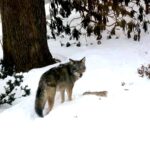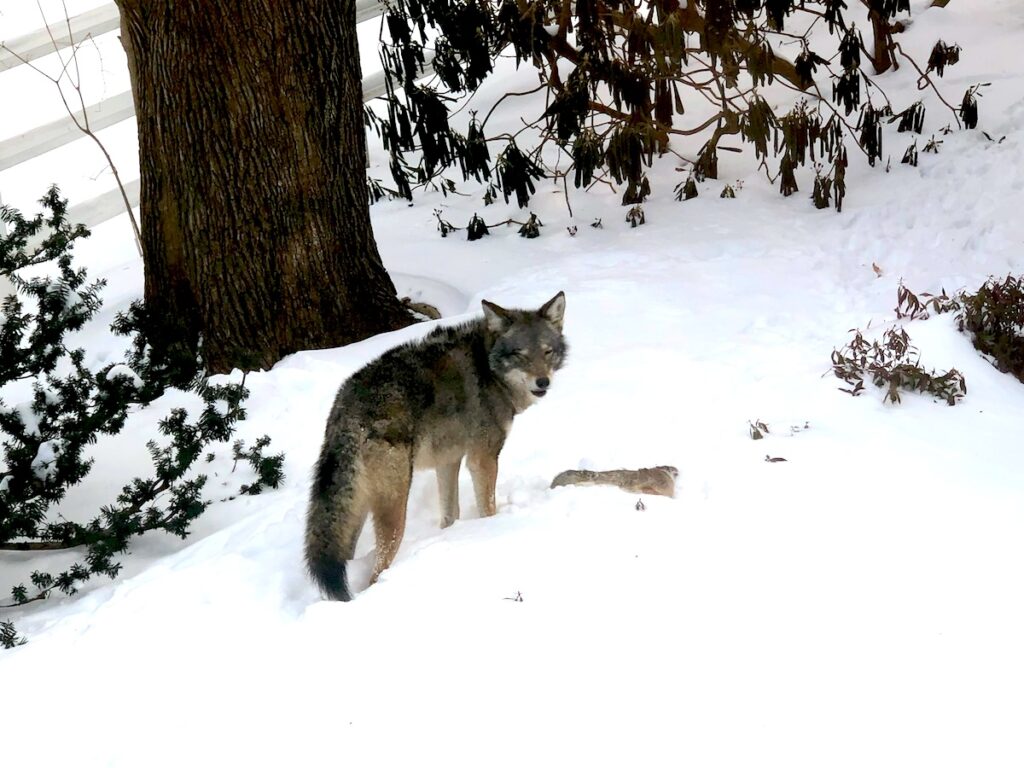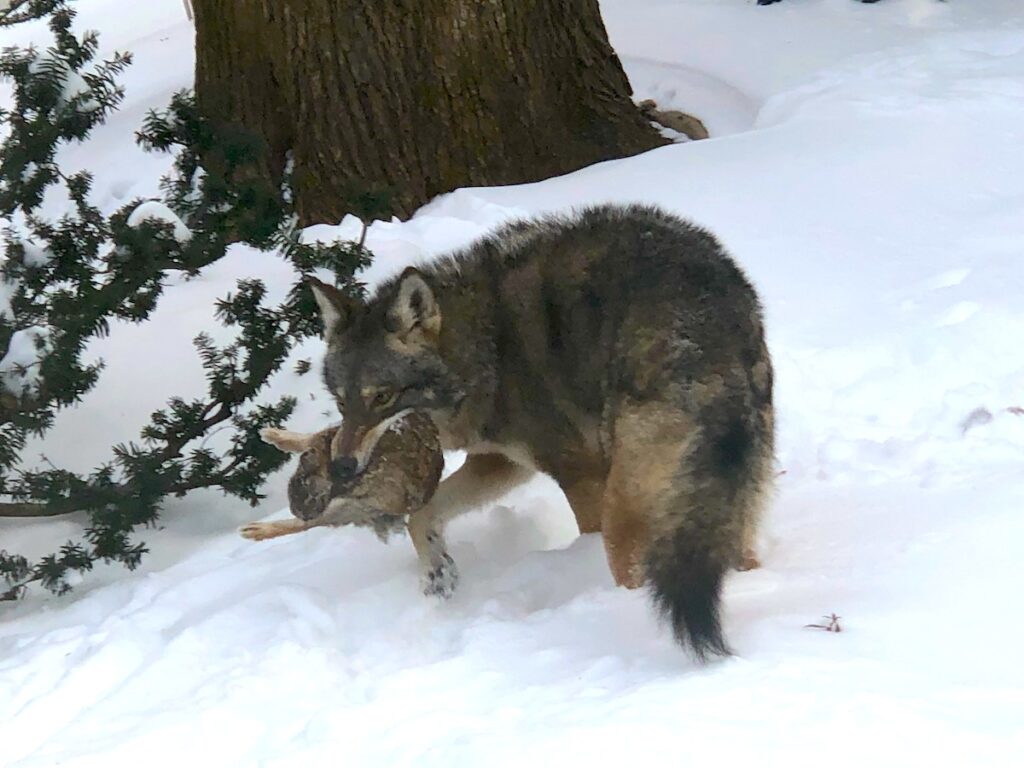
By Jeffrey North
As the cold winter months set in across New England, coyotes adapt their behaviors to the harsh conditions. They establish their breeding territories, and expand their range in search of food. Belmont has ample green space and conservation land where coyotes roam and hunt. For the most part, Belmont’s coyotes raise their young, contribute to the health of the ecosystem, and mind their own business.
Coyotes (Canis latrans) are an important species in North American ecosystems, and their role is often overlooked. These adaptable predators play a vital role in maintaining ecosystem balance and diversity by controlling populations of small mammals and birds and by influencing the behavior of larger herbivores like deer.
Coyotes are opportunistic hunters and scavengers, and they can survive in many habitats, including urban areas. Their diet includes small mammals like rodents, rabbits, squirrels, birds, insects, fruits, and carrion. By controlling the populations of these smaller animals, coyotes help to prevent overgrazing and habitat destruction, which can have cascading effects on other species in the ecosystem.
Coyotes are also known to influence the behavior of larger herbivores like deer. Studies have shown that the presence of coyotes can cause deer to change their feeding patterns and avoid areas where they are more vulnerable to predation. Coyotes can reduce damage to the vegetation in those areas, allowing for more diverse plant communities and healthier ecosystems.
While humans often see them as pests or nuisances, they play a vital role in maintaining the health and diversity of North American ecosystems.
Where coyotes are in Belmont
In Belmont, we are currently seeing much of the coyote activity in the Winn Brook area and Belmont Hill. All coyotes spotted appear to be well-fed and healthy at this time, according to Suzanne Lasavage, Belmont’s animal control officer.
Residents should be aware that these sightings do not necessarily indicate that the coyotes are becoming aggressive. The animals are likely adapting to changing conditions and exploring new food sources.
However, residents need to take precautions to minimize potential conflicts. Securing garbage cans, not leaving pet food outside, and supervising pets, especially during the early morning and evening hours, are practical measures to reduce the likelihood of negative interactions.
For more information about coyotes, visit these websites.
The Human Society of the United States has a general page about coyotes, and a page about solving coyote problems.
www.humanesociety.org/resources/what-do-about-coyotes
humanepro.org/trainings/solving-problems-coyotes
Mass Audubon has a page about living with coyotes.
www.massaudubon.org/nature-wildlife/mammals-in-massachusetts/coyotes
Project Coyote advocates for coexistence with coyotes.
The Massachusetts Division of Fisheries and Wildlife also has information about living with coyotes.
www.mass.gov/doc/living-with-coyotes-fact-sheet/download
Jeffrey North is the managing editor of the Belmont Citizens Forum Newsletter.




Sorry, the comment form is closed at this time.